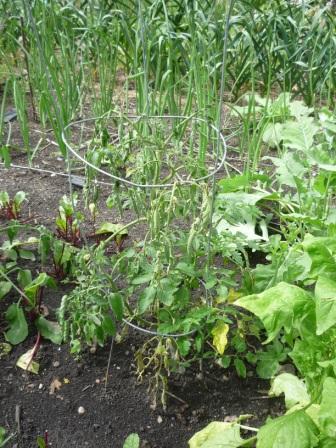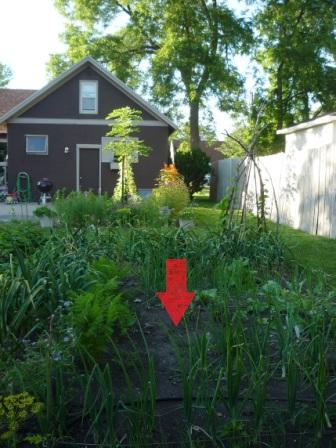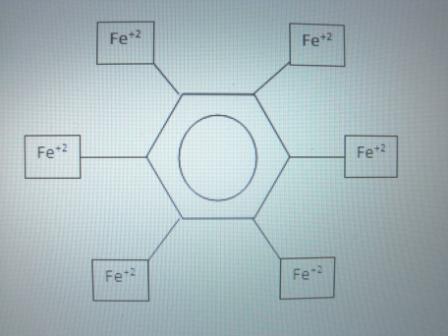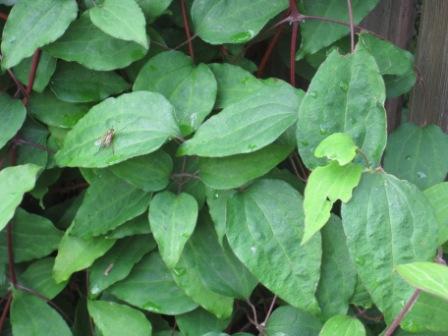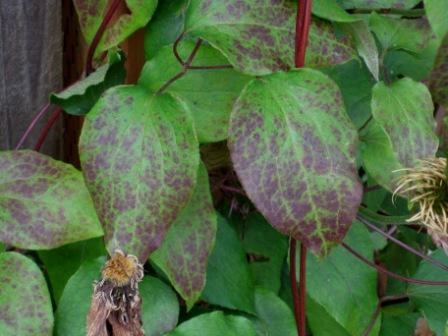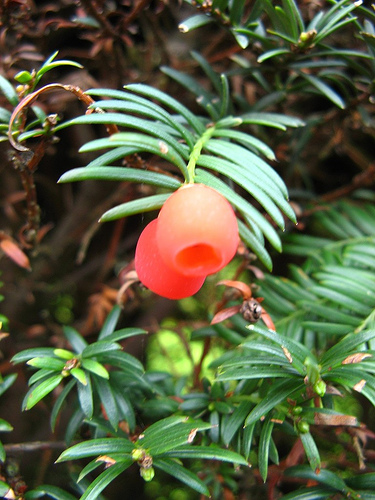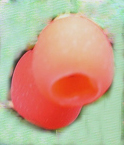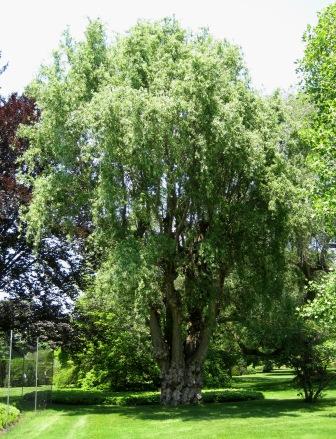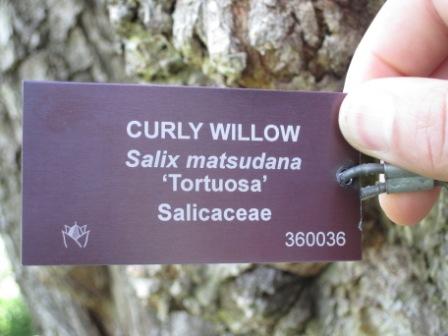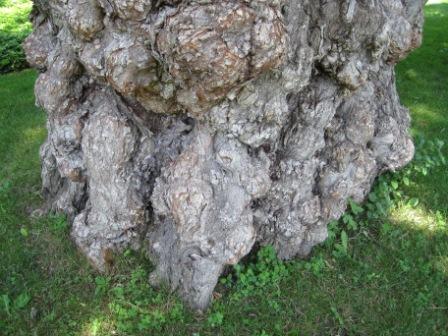Friday’s puzzle was tricky! I will preface the answer by saying I don’t do a lot of container plants except for annuals. When I plant up annuals into soilless potting mix (which is dehydrated), I work in the water thoroughly into this fluffy medium. Friday’s situation was a little different. The Clematis are more or less permanent residents in these planters, so I use real soil rather than potting mix. (This will reduce or eliminate the shrinkage you’ll get if you use soilless media, as these highly organic materials steadily decompose.)
But what I thoughtlessly did was to mix water into my nice screened clay loam like it was a potting mix. The result of vigorous mixing is to break down the soil structure and drive water into all of the pore spaces, resulting in a totally waterlogged soil:
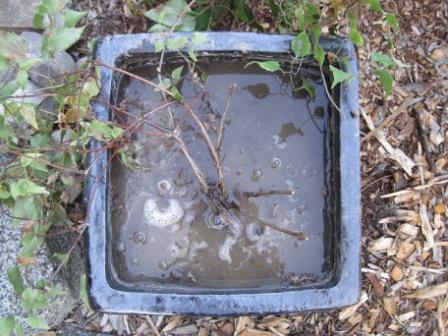
After my "D’oh" moment when I realized my error, I potted the second Clematis into loose soil and let gravity work the water into the larger pore spaces. This passive approach protected the soil structure and left some of the pore spaces filled with air rather than water, so that the water drained through rather than sitting on top of the compacted soil:
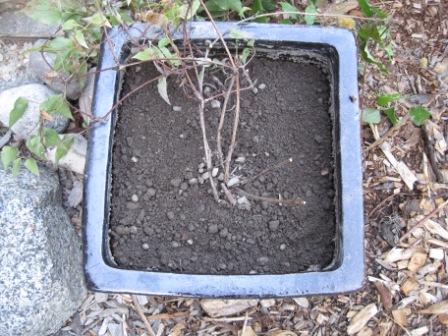
This demonstrates one of the rules of working with landscape soils: you should avoid any potential compaction when the soil is wet. (It’s the same reason you shouldn’t stomp on wet backfill as you’re transplanting trees and shrubs.) As Ginny pointed out, you’ll create a cement-like structure – not conducive for water movement, oxygen availability, or root growth.
